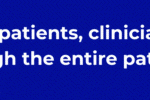
Content by Access.
The world of health and social care is undergoing a transformational shift, and remote patient monitoring (RPM) is emerging as one of the sector’s most promising solutions. This approach leverages digital technology and software to assess, track, and report on a person’s health status while they recover at home. Thanks to this revolutionary technology, the NHS has met its 10,000 winter bed target and avoided thousands of unnecessary hospital admissions in the last 12 months.
However, as with any new solution, there are many questions to consider. Is RPM effective? What challenges and benefits does it present? Does it truly improve patient outcomes, and if so, how? This article outlines the essential details about how RPM technology works and why it might be a more effective alternative to traditional hospital care.
What is remote patient monitoring?
Remote patient monitoring models, commonly referred to as virtual wards, telecare, technology-enabled care, or “hospital at home” care models, utilise various monitoring devices, detectors, and wearables to manage patients’ long-term conditions. This enables clinicians to provide high-quality, around-the-clock care without the need for hospital admission or treatment, promoting a preventative approach to care and allowing timely interventions.
How does remote patient monitoring work?
RPM technology is designed to work seamlessly with the systems and processes of clinicians, capturing the full picture of a person’s health and living environment and providing them with real-time updates on their health status as they recover at home. Some of the devices and applications used in Access Technology-Enabled Care include:
Wearables and digital apps: Fitness trackers and smartwatches continuously gather data on a person’s oxygen levels, blood pressure, heart rate, and sleep patterns, giving healthcare providers an all-around view of their health. Patients can also use the app to communicate with health staff and report their symptoms.
Proactive alerts/alarms: RPM systems are equipped with algorithms that analyse data in real-time to identify potential health issues. For example, a sudden drop in oxygen levels or an irregular heart rate can trigger an alert, prompting clinicians or multi-disciplinary teams to quickly intervene.
Fall fetection: For those with mobility issues, fall detection technology is a key component of RPM. Sensors built into wearables or placed around the home can detect falls and automatically alert caregivers or emergency services if the person is at risk of injury.
Environmental and behavioural monitoring: Beyond vital signs, RPM systems also monitor environmental factors and patient behaviour. This includes tracking whether a patient has taken their medication, detecting changes in routine that may be a cause for concern, and monitoring home conditions such as temperature and humidity to ensure a safe living environment.
Why is it important?
In the last 12 months, the NHS has been under immense strain. More than 19,000 patients were reported to have waited in A&E for three days, a record-breaking 7.6 million people are currently on the elective care waiting list, and stroke and heart attack patients have had to wait an average of 33 minutes for an ambulance.
Remote patient monitoring can alleviate these pressures by allowing patients to be cared for at home instead of in a hospital bed. As a result, congestion in hospitals is reduced, patient flow is improved, the average length of stay is shortened, and costs and resources can be allocated more efficiently. Patients also benefit from greater freedom and independence, faster recovery, faster discharge, more quality time with friends and family, and a lower risk of contracting hospital-related infections.
The rise of virtual wards
Virtual wards have been around since 2005, but the NHS only adopted them on a nationwide scale during the Covid-19 pandemic, a time when hospitals were at full capacity, personal protective equipment (PPE) was in short supply, and the risk of contracting COVID-19 and other hospital-bred infections was at an all-time high.
With millions of lives in potential danger, the health system was quickly forced to find ways of stemming the influx of new patients and readmissions while still enabling patients to get the care they needed. Virtual wards and RPM were found to be viable solutions by treating the patient from their home or a care home. They enabled patients with acute respiratory infections and COPD to submit readings of their vital signs, such as blood and oxygen levels, to a healthcare provider via telephone or an app. Carers or healthcare staff could then provide further help if necessary. If the patient’s condition remained stable after 14 days, they could be discharged.
After the success of COVID-19 virtual wards, NHS trusts around the country expanded the program to care for stroke sufferers and frailty patients. This approach is now also being used to treat those with long-term heart conditions, which make up 5 percent of all emergency hospital admissions in the UK.
Integrated Care Systems (ICSs) are still being asked to scale up virtual wards and continue pushing for the long-term goal of 40-50 virtual ‘beds’ per capita, which would translate into 50,000 admissions according to NHS England.
Benefits of RPM across the healthcare spectrum
The adoption of virtual wards and RPM offers numerous benefits for patients, clinicians, caregivers, and Integrated Care Boards (ICBs) in the following ways:
Patients: RPM provides a sense of security and comfort, knowing that their health is being monitored continuously. This is particularly beneficial for patients with chronic conditions who require ongoing care as it promotes independence and a faster recovery. Additionally, the reduced need for hospital visits minimises disruption to their daily lives.
Clinicians: Healthcare providers gain access to a wealth of real-time data, enabling them to make informed decisions and personalise care plans accordingly. RPM also allows clinicians to monitor a larger number of patients remotely, giving them more capacity to deliver quality care.
Caregivers: Family members and professional caregivers benefit from the reassurance that their loved ones are being monitored around the clock. This reduces the burden on caregivers and ensures timely intervention if needed.
ICBs and Healthcare Systems: By reducing hospital admissions and optimising resource allocation, RPM contributes to cost savings and improves efficiency within the whole healthcare system. This aligns with the goals of ICBs to deliver high-quality, coordinated care across different settings.
Addressing the challenges of RPM
There are a few challenges associated with treating patients on virtual wards, one of which is the potential for loneliness. While visits from multi-disciplinary teams may be part of a person’s treatment plan, the general lack of social interaction can negatively affect elderly patients and those living alone.
To mitigate this, we should be leaning on the community and utilising social prescribing services to help those who may not have adequate support from friends or family. While having emergency community teams on standby should be standard practice, we shouldn’t wait for the patient to hit rock bottom before intervening. Instead, there should be mental health measures and regular assessments carried out to support patients’ emotional well-being while they recuperate.
Another issue with RPM is health equity and digital literacy. During a discussion at Digital Health Rewired earlier in the year, Health Innovation Network Director and Co-Founder, Dr Amanda Begley, highlighted how individuals who are eligible for remote patient monitoring are hesitant to adopt technology in their homes. This is primarily due to the difficulty some patients have using the technology and single-handedly putting on wearables and monitoring devices.
To address this, offering training sessions and ongoing support for patients to become comfortable and proficient with the technology can alleviate fears and build confidence. Collaborating with community organisations to provide access to necessary technology and internet services can also help bridge the digital divide. For patients with physical limitations, we should ensure that devices are user-friendly and provide alternatives if they are unable to attach them unassisted.
Lastly, we should encourage regular feedback from patients to make improvements and measure the effectiveness of RPM, ready to make adjustments where needed. Only then will we be able to identify specific downfalls, areas in need of enhancement, and ensure that the program continues to meet the diverse needs of all patients.
The future of healthcare: driving quality outcomes
The ultimate goal of virtual wards and RPM is to produce quality outcomes. For patients, the best place for them is somewhere they feel comfortable, relaxed, and reassured, with access to everything and everyone they need to support their recovery and their social and emotional needs. For hospitals, it’s having enough capacity and the right tools, people, and resources to deliver care effectively.
As Amanda Pritchard, Chief Executive of NHS England, noted in her speech at the NHS ConfedExpo in Manchester last month, 1% of the population in the last year of their life accounts for a third of all hospital bed days. She also said that caring for people at home and within the community could not only shift this percentage by 10% and give patients and their families a better overall experience, but it would deliver the same effect as building three new hospitals.
RPM may not be the solution to all the health sector’s challenges, but it’s a step in the right direction. For it to make a tangible difference, RPM needs to be part of a broader, preventative strategy that leverages technology, ensures accurate data sharing, and fosters open communication and collaboration among healthcare providers, community services, and patients. By combining these elements, transforming the future of healthcare might be more achievable than we think.
Join us on 5 September for an exclusive webinar, where Access and HTN will discuss how the integration of wearables and digital apps is critical for achieving better health outcomes and transforming care delivery.






